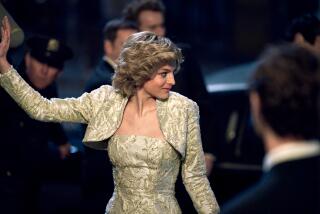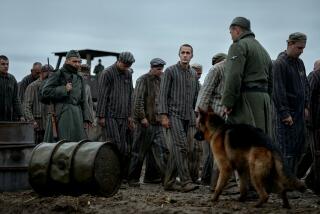TV REVIEW : Channel 10 and Faces of a Civil War : Yugoslavia: Shot after shot focuses on the children of the strife-torn republics.
- Share via
SAN DIEGO — The first and most obvious question about Channel 10’s onehour special on the civil war raging in the former Yugoslavia is: Why ?
After all, what could a local San Diego station add to the extensive coverage of this international tragedy?
The answers to these questions soon become apparent in “Faces of War,” as the KGTV crew treks through the torn republics, presenting a heart-wrenching and detailed view of the human toll of the war, going far beyond the two-minutes-a-night coverage of the nightly network news.
“Faces of War,” scheduled to air tonight at 9, is aptly named. Shot after shot focuses on the children and families stuck in refugee camps, their lives shattered by the conflict.
This is a war. It’s not a series of isolated skirmishes. It’s not a police action. “Faces of War” brings the message home, focusing on the devastation in the countryside.
This is not a special about politics. It is about the children. At every opportunity, the camera focuses on the children. Over and over again, powerful images of children.
The Channel 10 crew--reporter Stephen Clark, photographer Richard Klein and producer Eileen Brennan--follows a humanitarian group attempting to take supplies to hospitals in Bosnia-Herzegovina. It also tracks the efforts of a man encountered in the Frankfurt airport as he was attempting to find his family and bring it out of Croatia.
The local connection is tenuous--donations from San Diegans helped buy the medical supplies being transported on this trip, Clark assures the audience--but it doesn’t matter. This is a powerful subject that has received a relative pittance of attention from the national media and the government, considering the attention that has been given to recent conflicts in the Middle East.
Only about two-thirds of “Faces of War” was available to be previewed, but that was enough to make clear that this is a compelling piece. Better than the day-to-day coverage, the special clearly explains the battle between the three republics.
“It is like a boxing match with three fighters in the ring, and one of the fighters is a heavyweight champion,” Clark says.
Clark leaves no doubt as to who he considers the bad guys in this struggle.
“Judging by the destruction we saw, it is hard to believe Serbia is trying to hold Yugoslavia together,” Clark says. “It seems more likely the Serbs are trying to drive the Croats and Muslims out of Bosnia and keep the land for themselves.”
Refugee camps are no place for dispassionate objectivity, so Clark’s editorializing can be excused. When there is talk of “ethnic cleansing,” a reporter should have leeway to speak his mind.
The efforts of Nick Zenkich, the man the crew met at the airport, to get his family out of the country are particularly gripping. The family is seen anxiously waiting outside the passport office in what may be their last chance to leave the country before winter sets in. Zenkich must return to the United States, and if they are not able to arrange for the proper papers on this day, the relatives will be stuck. Zenkich is late and the tension mounts as their last chance begins to fade away.
In general, the style of the presentation is stiff, and the viewer never escapes the impression that Clark and the crew are on a very controlled tour. His sweater tossed over his shoulders, Clark always manages to have the look of someone returning from a tough trip to Sea World, even when mortars can be heard falling in the background.
Clark is a solid presence throughout, but he always seems slightly detached from the scene. He’s usually photographed standing a few feet away from the people, removed, allowing the tour guide-interpreter to control the situation.
Clark’s narration is rigid and wordy. He comes up with a few good lines, but for the most part he tends toward the overly dramatic.
“The mortars and grenades silenced the music but can never silence the memories,” he says, standing in a destroyed church.
Such hyperbole is unnecessary. The pictures speak for themselves.
More to Read
The complete guide to home viewing
Get Screen Gab for everything about the TV shows and streaming movies everyone’s talking about.
You may occasionally receive promotional content from the Los Angeles Times.






